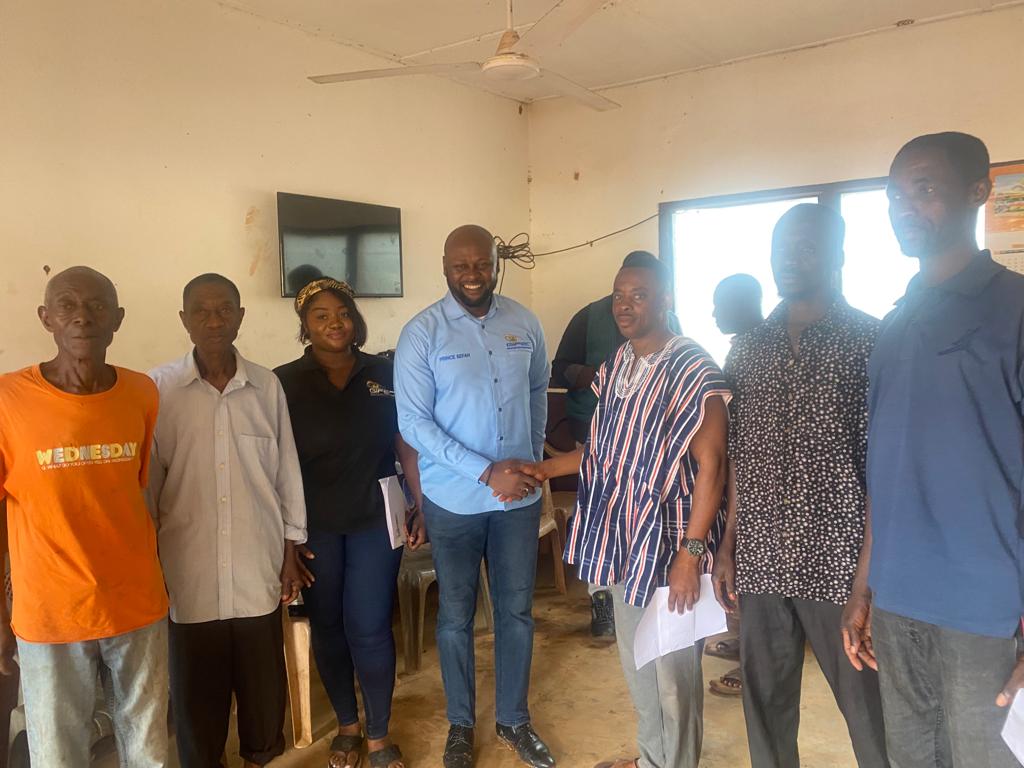Kwahu (E/R), Aug. 21, GNA – Four Communities in the Kwahu South and East Municipalities have released parcels of land for the construction of Rural Sites for the Ghana Rural Telephony and Digital Inclusion Project (GRT&DIP).
Government in 2019 provided funding for the establishment of 2,016 Rural Sites in order to ensure 95 per cent mobile network coverage in Ghana.
The communities are Adunkwaa and Osubeng in Kwahu South Communities and Onyemso and Ahantanan in Kwahu East.
Mr Prince Sefah, the Administrator of the Ghana Investment Fund for Electronic Communications (GIFEC), told the GNA during the exercise for land acquisition that the project, since its inception in had chalked some remarkable milestones in its implementation.
He said sites had been built in 1,084 communities, with 512 integrated to the core network and 417 On-Air (activated) and delivering voice and data services to over 120,000 average daily subscribers across various rural communities.
He said as the key implementing agency for the GRT&DIP, GIFEC was responsible for facilitating land acquisition, waiver on equipment and all required permits for the implementation, as well as overall supervision of the Project.
He said this activity involved community engagement and the acquisition of a suitable land for the construction of the project site, following a drive test to confirm viability of communities for the project.
“For the current batch, acquisition is being made for Eighty-Two communities across that passed technical simulation and approval from the Mobile Network Operators,” he said.
He said the exercise was being conducted in the Central, Western, Western North, Eastern, Ashanti, Volta, Oti and Northern Regions.
“The first stage of 1010 sites are at various stages of completion,” he added.
He said their Rural Connectivity Programme, which constituted the biggest investment, ensured the facilitation and provision of telecommunications infrastructure to communities which were considered unserved or underserved.
These are relatively small communities with low economic viability, hence the inability of Mobile Network Operators (MNOs) to extend their services.
He said since 2017, the success of the programme had been hinged on their strategic collaboration with industry partners like Huawei and the MNOs, which enabled the building of 400 sites within 2 years, with the innovative Rural Star Technology.
The Rural Star, which was specifically developed for Ghana by Huawei, presents a 60 per cent cost savings on the traditional mast, and ensures efficiency.
He said the Fund was leaving no stone unturned to make sure that “we use whatever creativity and hard work, to make sure that we meet this expanded mandate.”
He commended the government for the funding to continue to expand the facility to underserved communities.
Mr Emmanuel Atta Ofori, the MCE for Kwahu South Municipal Assembly expressed gratitude to the Fund for selecting these communities to locate the Rural Sites.
He said this would boost economic activities and promote growth in the communities.
The MCE said one of the challenges in the communities is Rural electrification and assured residents of the government’s efforts to provide them with electricity.
Nana Owusu Mireku, Chief of Onyemso, said the provision of the Network facility would impact greatly on the study of ICT in schools.
He said it would also promote economic activities, where there could be communication between farmers and buyers in the urban areas, since the people were predominately farmers.

GNA